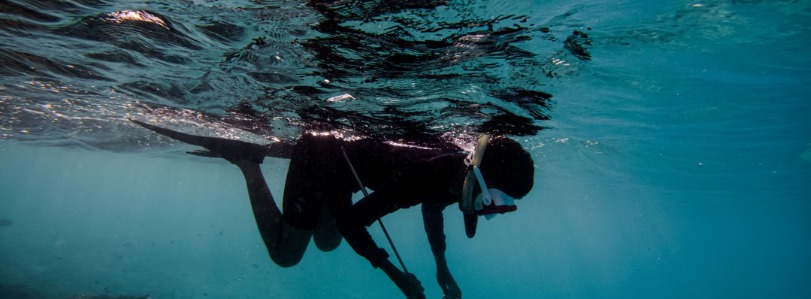Spearfishing in the Keys
The places to go spearfishing in the Keys on the Atlantic side can be divided into three basic areas. Spearfishing around the bridges is not included as between the currents and the boats, it’s too dangerous. This article only refers to spearfishing without tanks. Most divers spearfishing in the Keys free dive. Scuba opens up another area beyond the reef while eliminating the near shore coral heads.
What is Spearfishing?
Spearfishing is a type of fishing that uses a specialized spear or harpoon to catch fish. It is an ancient form of fishing that has been used for thousands of years and is still popular today.
Spearfishing requires skill and patience, as the fisherman must be able to accurately aim and throw the spear in order to successfully catch a fish. The spear is typically attached to a line, so if the fisherman misses their target, they can retrieve it easily. In addition, many fishermen use a snorkel and mask to help them spot fish underwater before they take aim.
Spearfishing can be done from shore or from a boat, depending on the location and type of fish being targeted. It is also possible to use different types of spears for different species of fish, such as barbed spears for larger fish or multiple prongs for small schools of fish.
About Spear fishing Florida Keys
Fishermen in the Florida Keys are rejoicing as they have recently been given permission to spearfish. According to the Florida Fish and Wildlife Conservation Commission, this practice has been allowed since June 1st and will continue through September 10th. The commission approved this due to the increased abundance of lionfish in the area, which is a non-native species that threaten coral reefs and native fish populations.
Spearfishing is an ancient technique used by fishermen for thousands of years where you use a spear or harpoon-shaped device to catch fish. This method is much more effective for catching lionfish than other methods such as nets or traps because it allows fishermen to get closer to their target. Because of its effectiveness, many local fishermen have already started taking advantage of this new opportunity.
The Near Shore Coral Heads
This is the first area and the closest to the shore. They are small groups of coral in shallow water, about ten feet deep. It’s possible to hit some of their tops with a prop on a low tide. They’re too far out to swim to from shore, but easy to reach with a small boat. Visibility is often poor, especially if the wind and waves are up.
The best ones are where there’s an inner circle of coral, then a ring of sand, then turtle grass. Smaller areas can often be better, as fewer people visit them. The best technique here is to quietly slip under the surface and slowly swim close to the bottom as you circle the coral. The water is too shallow to stay on the surface until you spot a target fish. You’ll often frighten them when you dive under. You’ll see hogfish, snapper, and grunts.
After your first pass, go around again. Look under the ledges. This second pass will often turn up a grouper as well as the above-mentioned fish. The third step is to explore the inner parts of the coral patch.
The Patch Reefs
The Patch Reefs are in the Hawks channel between the Keys and the reef. From a boat, they’ll appear as darker patches, similar to a cloud shadow. So similar that I’ve stopped at shadows. Check before you anchor and dive in.
Don’t run over the coral patch and alarm the fish. Always anchor on the sand away from it. It will make retrieving the anchor easier and saves the coral from anchor damage.
They’re in about 25 feet of water. Deep enough that you can circle the edges from the surface without scattering the fish. That is if you can see the bottom. Visibility is often far from ideal and the coral isn’t that great. This isn’t necessarily a bad thing as many divers never visit these areas. These are excellent places for hogfish, especially along the line where the coral meets the sand or grassy areas. Nurse sharks are common on the patch reefs. They get bold and will go after a speared fish or your goodie bag.
The Reef
The reef runs the length of the Keys about five miles offshore. Here the water gets the Bahamas clear. The reef is often, I can’t believe I’m here beautiful. When tourists think of spearfishing in the Keys, the reef is what they’re picturing. As a result, it can be crowded and the fish shy. But there are legal spots with big-eating fish and few divers.
Divers are more likely to find big fish here and on the patch reefs than at the near-shore coral heads. Big grouper live on the reef. Carefully check holes in any large upright coral heads. If you want to make a contribution to the reef, pick off a few invasive lionfish. Unfortunately, they’re becoming common. There are often bull sharks at the drop-off on the reef’s outer edge. They can act aggressively when there’s blood in the water.
Pick your area
When spearfishing in the Keys you have three areas to choose from. Decide on one that fits your boat and skill level. The reef is best for photography, but when spearfishing in the Keys, the murky patch reefs will usually provide you with more to eat.
